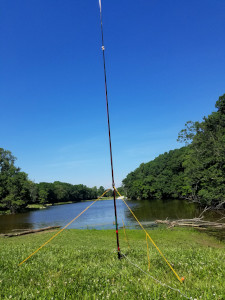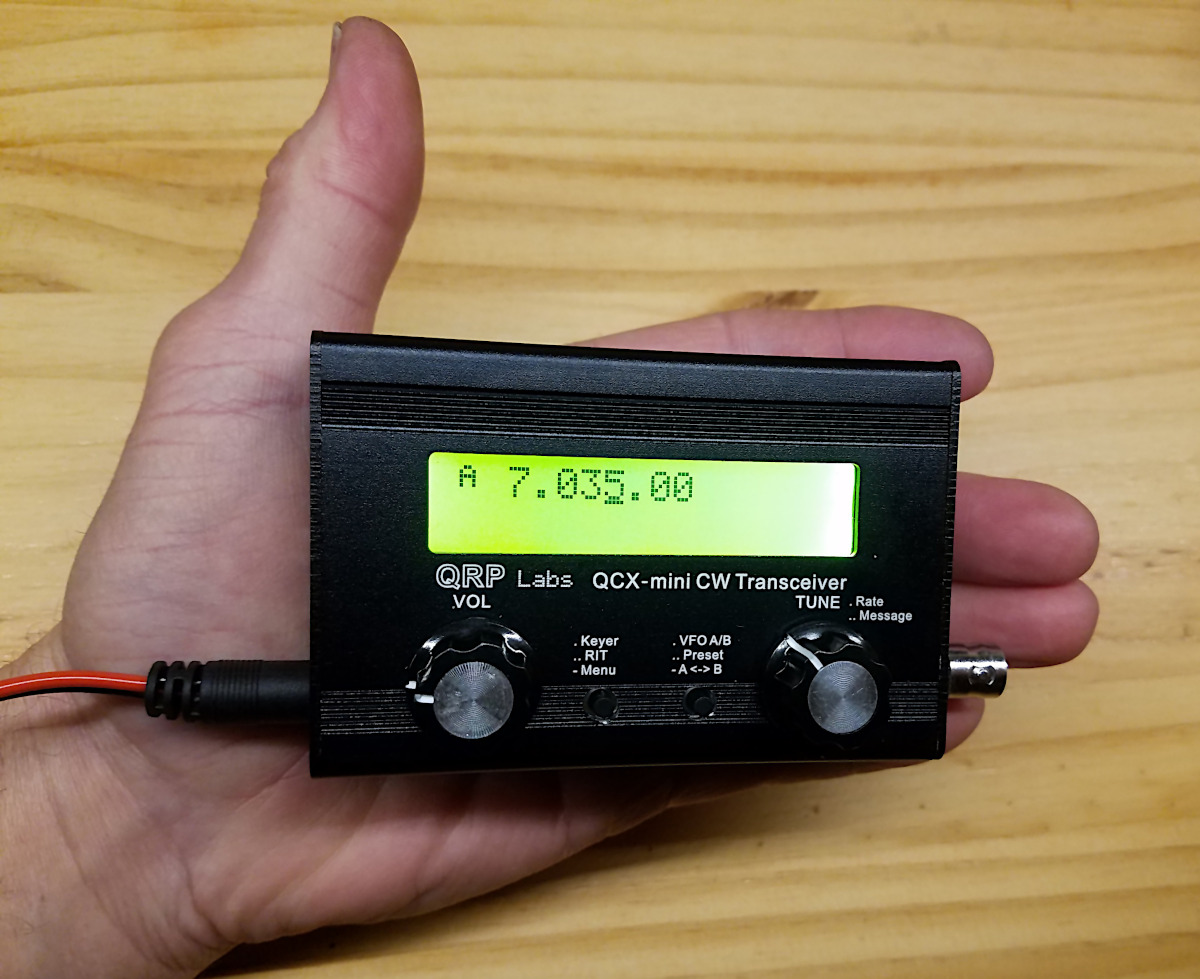 Recently I went on vacation to Virginia and wanted to do some POTA activations using my new QCX-mini transceiver. On this trip I wanted to hike up to the summits of various mountains that are in various national parks. Since my QCX-mini is the 40 meter version, I obviously needed an antenna for it. My personal preference for portable antennas is to use vertical antennas as opposed to a dipole or other horizontally based antenna. Since my QCX-mini is 40 meters, a full sized vertical, being approximately 33 feet high, is a bit impractical.
Recently I went on vacation to Virginia and wanted to do some POTA activations using my new QCX-mini transceiver. On this trip I wanted to hike up to the summits of various mountains that are in various national parks. Since my QCX-mini is the 40 meter version, I obviously needed an antenna for it. My personal preference for portable antennas is to use vertical antennas as opposed to a dipole or other horizontally based antenna. Since my QCX-mini is 40 meters, a full sized vertical, being approximately 33 feet high, is a bit impractical.
UPDATE: I have built a new version of this antenna that covers 40 through 20 meters. If you are interested in building a 3 band version of this shortened vertical, click here.
I have seen others using collapsible fishing poles for antenna masts, so I figured I would give it a try. I found on Amazon.com a 20 ft. Crappie Fishing pole that collapses down to just 4 feet. I also found a web site that calculates what is needed for a coil shortened vertical antenna – perfect!
From what I have read, a base loaded vertical is less efficient than one that has the loading coil that is more near the top. The downside of placing the loading coil higher is that it needs to be larger, which will add to the weight, as well as additional stress on the pole in windy conditions. What I decided on was placing the loading coil slightly higher than the center of the vertical antenna.
Given my design constraints and using the coil shortened vertical antenna calculator, I settled on my shortened vertical antenna design. The diagram below is what I came up with:

For the loading coil form I decided to use an In Sink Tailpiece. My reasoning is this, typically people use standard PVC pipe for the coil form, which is fine, but the wall thickness of the pipe seems unnecessarily thick for my application. My main concern here was to put less stress on the wire that is the vertical part of the antenna. A toilet overflow tube is much thinner and lighter and works just fine. The outside diameter of my overflow tube is 1.5 inches. I am assuming that is a typical outside diameter.
I used the coil shortened vertical antenna calculator based on where the coil is to be located in the above diagram and came up with 23 1/2 turns of # 24 enamel wire. I used 24 gage wire because I had it on hand. If you have a different gage wire, put that in the coil shortened vertical antenna calculator instead.
